Sonus Paradisi
Chapelet Spanish Collection, 18th c. [Hauptwerk]
Chapelet Spanish Collection, 18th c. [Hauptwerk]
Couldn't load pickup availability
The two Spanish instruments presented in this sample set are part of the collection of Francis Chapelet at Montpon-Ménestérol. Both organs are placed in the Auditorium, which Chapelet built in the garden of his house.
The organ with the green paint comes from the former monastery of Mondoñedo in Galicia. It was built by an anonymous organ builder at the end of 17th century. It has been restored by Pierre Chéron in 1977. All the stops of the single manual are divided between middle c/c#. The pedal is permanently coupled to the lowest octave of the manual. The instrument has a short octave, which was made chromatic in the sample set. The Hauptwerk software is able to emulate the short octave, if desired.
The instrument with the brown facade was saved by Francis Chapelet from a ruinous church in Castilia. Chapelet bought the organ, and one week after it was moved out, the church's vault collapsed. It was an empty organ case—only the front pipes were preserved and one of the windchests. The front carving bears the date 1736. Gerhard Grenzing restored the instrument in 1978 and enlarged it to allow for a wider repertoire. The organ has two manuals with a chromatic compass, and a full pedal of 30 keys.
Presented to you by Leonart Studio, your authorised reseller for Sonus Paradisi in Switzerland (shipped internationally). Get your digitally sampled historical organs for the use with the Hauptwerk virtual instrument software.
Share this Sample Set
![Chapelet Spanish Collection, 18th c. [Hauptwerk]](http://artful.shop/cdn/shop/files/ss_chapelet1.jpg?v=1692915997&width=1445)
![Chapelet Spanish Collection, 18th c. [Hauptwerk]](http://artful.shop/cdn/shop/files/ss_chapelet2.jpg?v=1692915997&width=1445)
![Chapelet Spanish Collection, 18th c. [Hauptwerk]](http://artful.shop/cdn/shop/files/ss_chapelet3.jpg?v=1692915998&width=1445)
![Chapelet Spanish Collection, 18th c. [Hauptwerk]](http://artful.shop/cdn/shop/files/ss_chapelet4.jpg?v=1692915997&width=1445)
![Chapelet Spanish Collection, 18th c. [Hauptwerk]](http://artful.shop/cdn/shop/files/ss_chapelet5.jpg?v=1692915998&width=1445)
![Chapelet Spanish Collection, 18th c. [Hauptwerk]](http://artful.shop/cdn/shop/files/ss_chapelet6.jpg?v=1692915996&width=1445)
![Chapelet Spanish Collection, 18th c. [Hauptwerk]](http://artful.shop/cdn/shop/files/ss_chapelet7.jpg?v=1692915996&width=1445)
![Chapelet Spanish Collection, 18th c. [Hauptwerk]](http://artful.shop/cdn/shop/files/ss_chapelet8.jpg?v=1692915998&width=1445)
![Chapelet Spanish Collection, 18th c. [Hauptwerk]](http://artful.shop/cdn/shop/files/ss_chapelet9.jpg?v=1692915997&width=1445)
![Chapelet Spanish Collection, 18th c. [Hauptwerk]](http://artful.shop/cdn/shop/files/ss_chapelet10.jpg?v=1692915997&width=1445)
![Chapelet Spanish Collection, 18th c. [Hauptwerk]](http://artful.shop/cdn/shop/files/ss_chapelet11_860eca33-51e9-4c12-8361-ddac94bd35b5.jpg?v=1692915995&width=1445)
Specification (stop list)
-
Manual I
A - 1. Castilian Organ
Positiv C–d3
Violon 8'
Tapadillo 4'
Flautin 2'
Nasardo 1 1/3'
Cimbala II
Viejas 8' -
Manual II
A - 2. Castilian Organ
Great C–d3
Flautado 8'
Octava 4'
Docena 2 2/3'
Quincena 2'
Nasardo 1 3/5'
Lleno III
Trompeta 8'
Clarin 4'/8' -
Manual III
B - 3. Galician Organ
C–d3
All stops divided between middle c/c#
Flautado 8'
Octava 4'
Docena 2 2/3'
Quincena 2'
Decinovena 1 1/3'
Lleno III
Trompeta/Corneta 8'
Bajoncillo/Clarin 4'-8'
Dulziana 8' -
Manual IV
-
-
Pedal
Pedal C–f1
Contras 16'
Contras 8'
Octava 4'
Corno 2' -
Other specification
Couplers:
I/II
III/II
II/P
III/P
Accessories:
Tremblant
History
The two Spanish instruments presented in this sample set are part of the collection of Francis Chapelet at Montpon-Ménestérol. Both organs are placed in the Auditorium, which Chapelet built in the garden of his house.
The organ with the green paint comes from the former monastery of Mondoñedo in Galicia. It was built by an anonymous organ builder at the end of 17th century. It has been restored by Pierre Chéron in 1977. All the stops of the single manual are divided between middle c/c#. The pedal is permanently coupled to the lowest octave of the manual. The instrument has a short octave, which was made chromatic in the sample set. The Hauptwerk software is able to emulate the short octave, if desired.
The instrument with the brown facade was saved by Francis Chapelet from a ruinous church in Castilia. Chapelet bought the organ, and one week after it was moved out, the church's vault collapsed. It was an empty organ case—only the front pipes were preserved and one of the windchests. The front carving bears the date 1736. Gerhard Grenzing restored the instrument in 1978 and enlarged it to allow for a wider repertoire. The organ has two manuals with a chromatic compass, and a full pedal of 30 keys.
The temperament found during the recording was similar to Werckmeister III.
Since both the instruments share the same room, it seemed appealing to put both together into one single sample set. In this way, it is possible to play a duet from a single console, where the lowest two manuals may serve for the Castilian organ, and a third keyboard can host the Galician organ. It is possible, for example, to send the Castilian organ ranks to the speakers positioned left, while sending the audio output of the Galician organ to the right positioned speakers (or using the front and rear speakers in similar manner), emulating the original placement of the instruments at the opposite walls of the auditorium. The pedal can be operated from a single pedal board, especially because the Galician organ has no dedicated pedal stops. To allow for switching the pedal board between organs for a double choir performance, a pedal coupler was added to the Galician organ. When it is desired to play the Castilian instrument only, the pedal coupler of the Galician organ must be off, so that no stops of the Galician organ are heard in the pedal.
Many thanks to Francis Chapelet for allowing us to capture the sound of his Spanish organs!
The link to the Francis Chapelet Collection: www.montpon-les-orgues.fr
Features
The samples are offered in 48kHz/24bit resolution. The multiple releases have three levels: short, mid and long. Hauptwerk v4.2 and higher supported, including HW 5. The sample set is in plain wave format, no encryption.
Reverb time
The reverb time is ca. 2 seconds. Although the organs were recorded with its natural acoustics, the original room is excessively dry. It is a good idea to add some digital reverb to the sample set.
Keyboards, pedalboard
The original compass of the Castilian organ keyboards is 51 keys (C-d3). The original compass of the Galician organ is 45 keys (C-c3) with the short bass octave. The compass was virtually extended to match the compass of the Castilian organ in the sample set.
The original compass of the Castilian organ pedal division is 27 keys (C-f1). The original compas of the Galician organ is one octave, permanently coupled to the manual. The pedal can be detached from the manual in the sample set by means of an added pedal coupler.
Tremulants
The Tremblant is made using the Hauptwerk tremulant model. There are no sampled tremmed ranks.
Channel format - recording perspectives
The sample set offers two recording perspectives. The direct channels were recorded close to the pipes, offering a good portion of the direct pipe sound. The diffuse audio channels were recorded far from the organ, allowing for more room resonances and reverb. These two pairs of ranks can either be mixed together to achieve any listening position between the two extremes, or used separately - depending on the prefererences of the user. A dedicated "mixing desk" is available in Hauptwerk to mix the sound to the desired level (see screenshots).
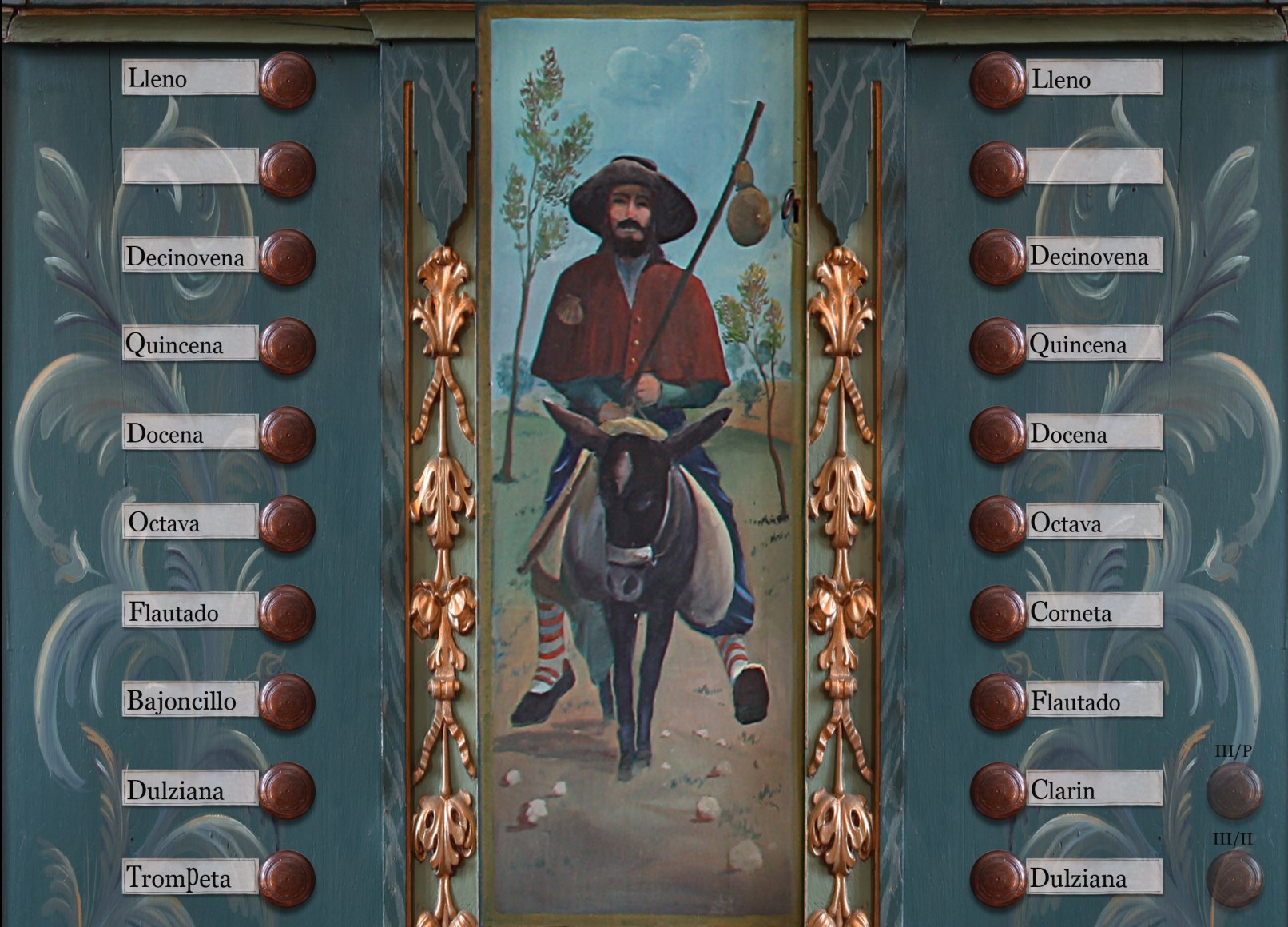
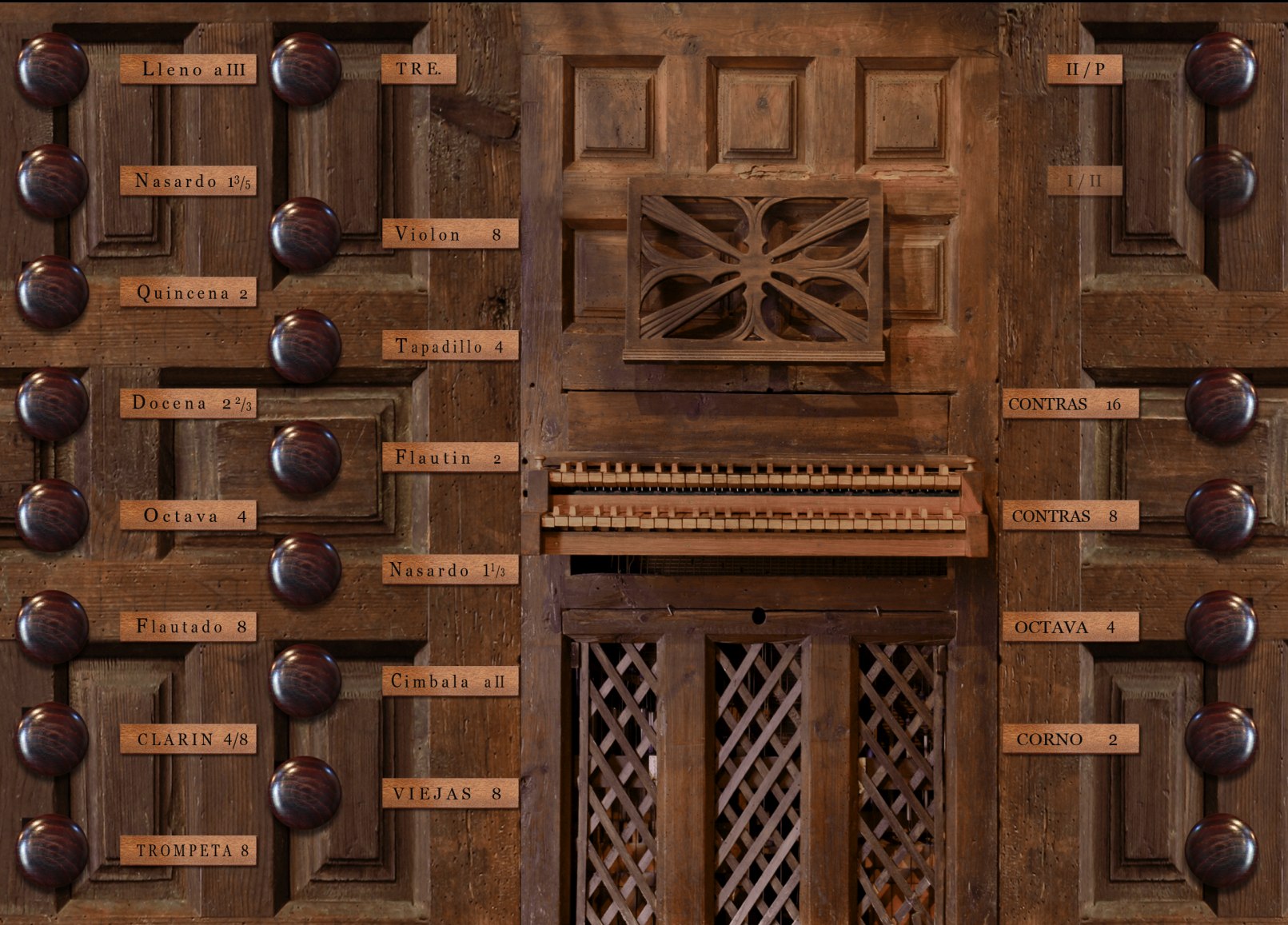
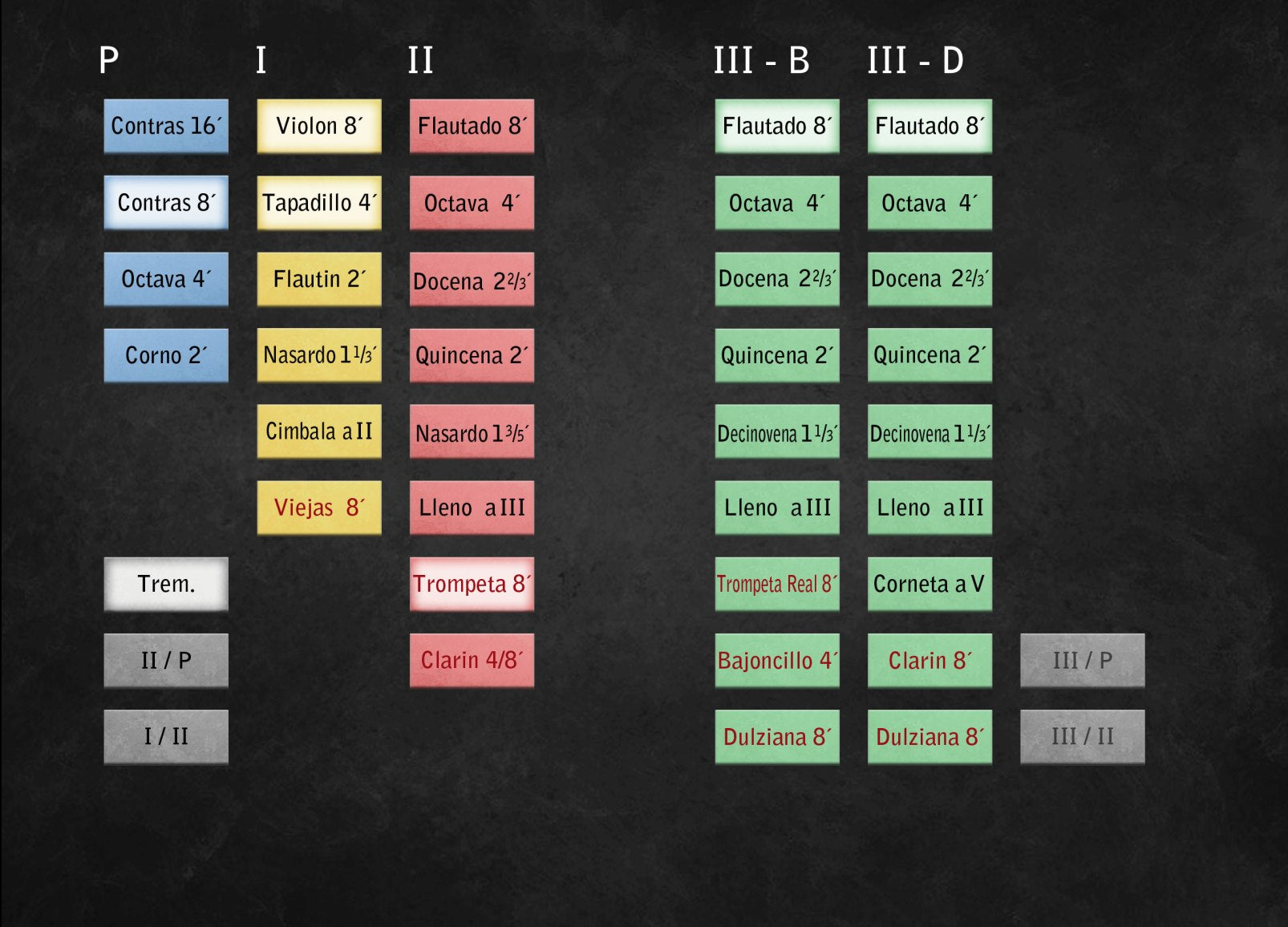
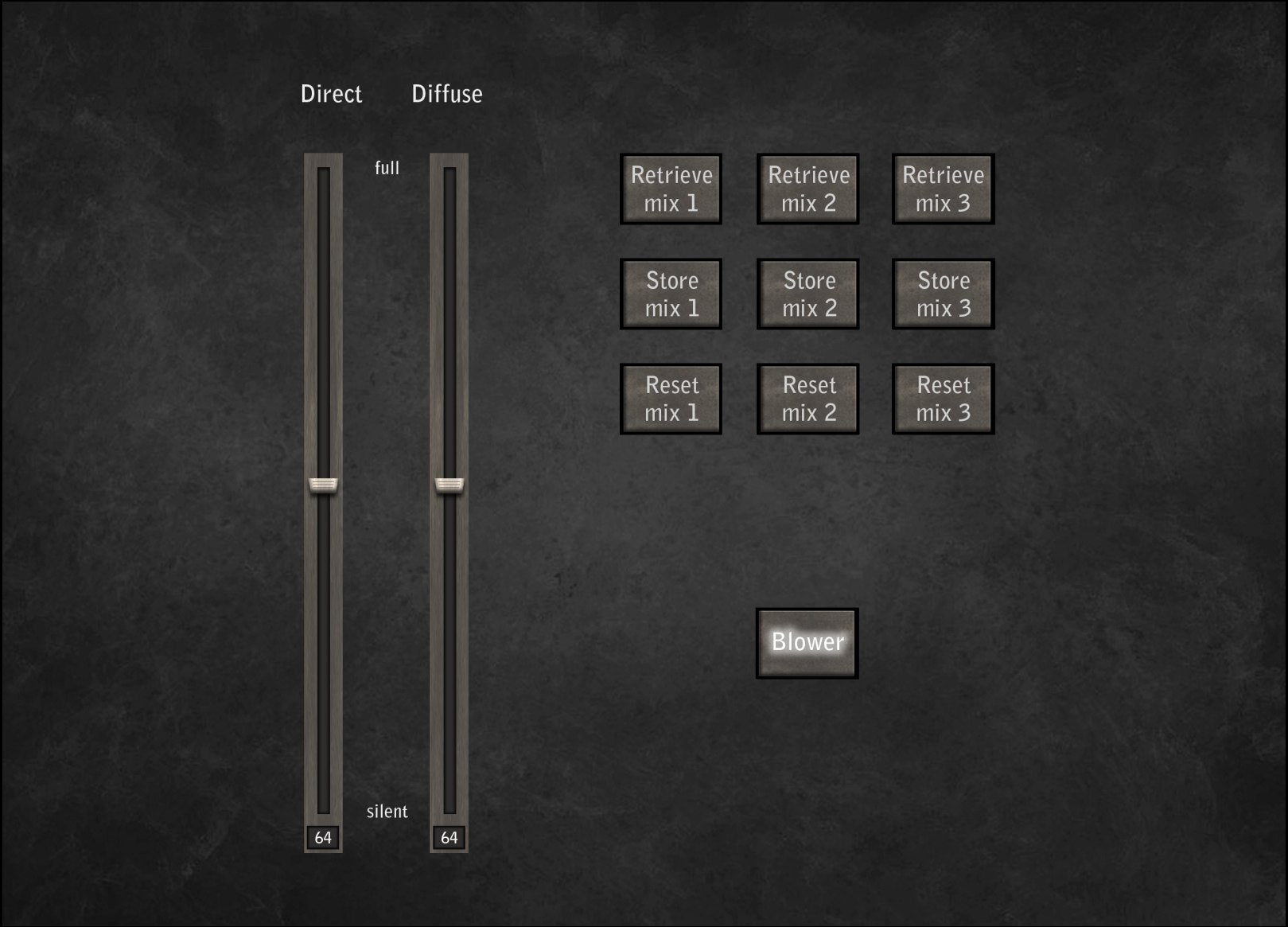
Requirements
Hauptwerk v4.2 and higher supported, including HW 5.
RAM consumption: 4 channels (direct+diffuse)
16-bit, other settings default: 4.6 GB
20-bit, other settings default: 8.1 GB (recommended)
24-bit, other settings default: 9.3 GB
Screen resolution 1280x1024 px or more.
Polyphony of 2000 voices recommended.
This Hauptwerk Sample Set is presented to you by Leonart Studio, an authorised reseller for the manufacturer Sonus Paradisi in Switzerland (shipping internationally). Enjoy this digitally sampled organ library for the use with Hauptwerk software and start expanding your historical organ collection today.
More Hauptwerk Sample Sets
-
Schwerin, Dom, Ladegast Organ 1871 [Hauptwerk]
Vendor:Sonus ParadisiRegular price CHF 616.00Regular priceUnit price / per -
Segovia, 1772 [Hauptwerk]
Vendor:Sonus ParadisiRegular price CHF 317.90Regular priceUnit price / per -
Groningen, 1450-1740 [Hauptwerk]
Vendor:Sonus ParadisiRegular price From CHF 658.90Regular priceUnit price / perCHF 1,681.90Sale price From CHF 658.90Sale -
St. Maximin, 1775 [Hauptwerk]
Vendor:Sonus ParadisiRegular price CHF 440.00Regular priceUnit price / per -
Reuter, 1928 [Hauptwerk]
Vendor:Sonus ParadisiRegular price CHF 473.00Regular priceUnit price / per -
Casavant, 1995 [Hauptwerk]
Vendor:Sonus ParadisiRegular price CHF 174.90Regular priceUnit price / per -
Rotterdam Hoofdorgel, 1973 [Hauptwerk]
Vendor:Sonus ParadisiRegular price From CHF 330.00Regular priceUnit price / perCHF 958.10Sale price From CHF 330.00Sale -
Piacenza, 1838 [Hauptwerk]
Vendor:Sonus ParadisiRegular price CHF 330.00Regular priceUnit price / per -
Bückeburg, 1997 [Hauptwerk]
Vendor:Sonus ParadisiRegular price From CHF 1.10Regular priceUnit price / per -
Lüdingworth, 1683 [Hauptwerk]
Vendor:Sonus ParadisiRegular price CHF 330.00Regular priceUnit price / per

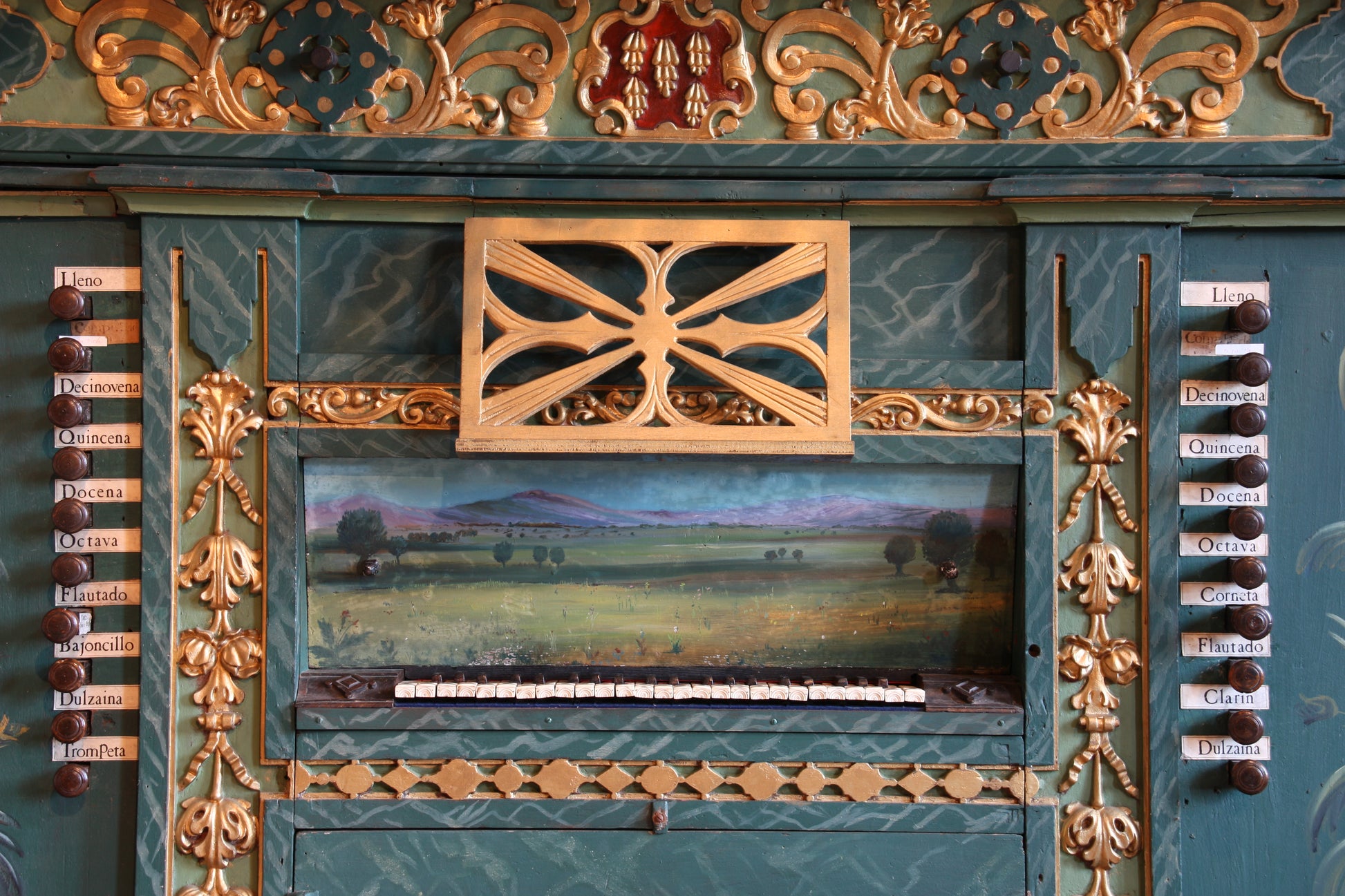

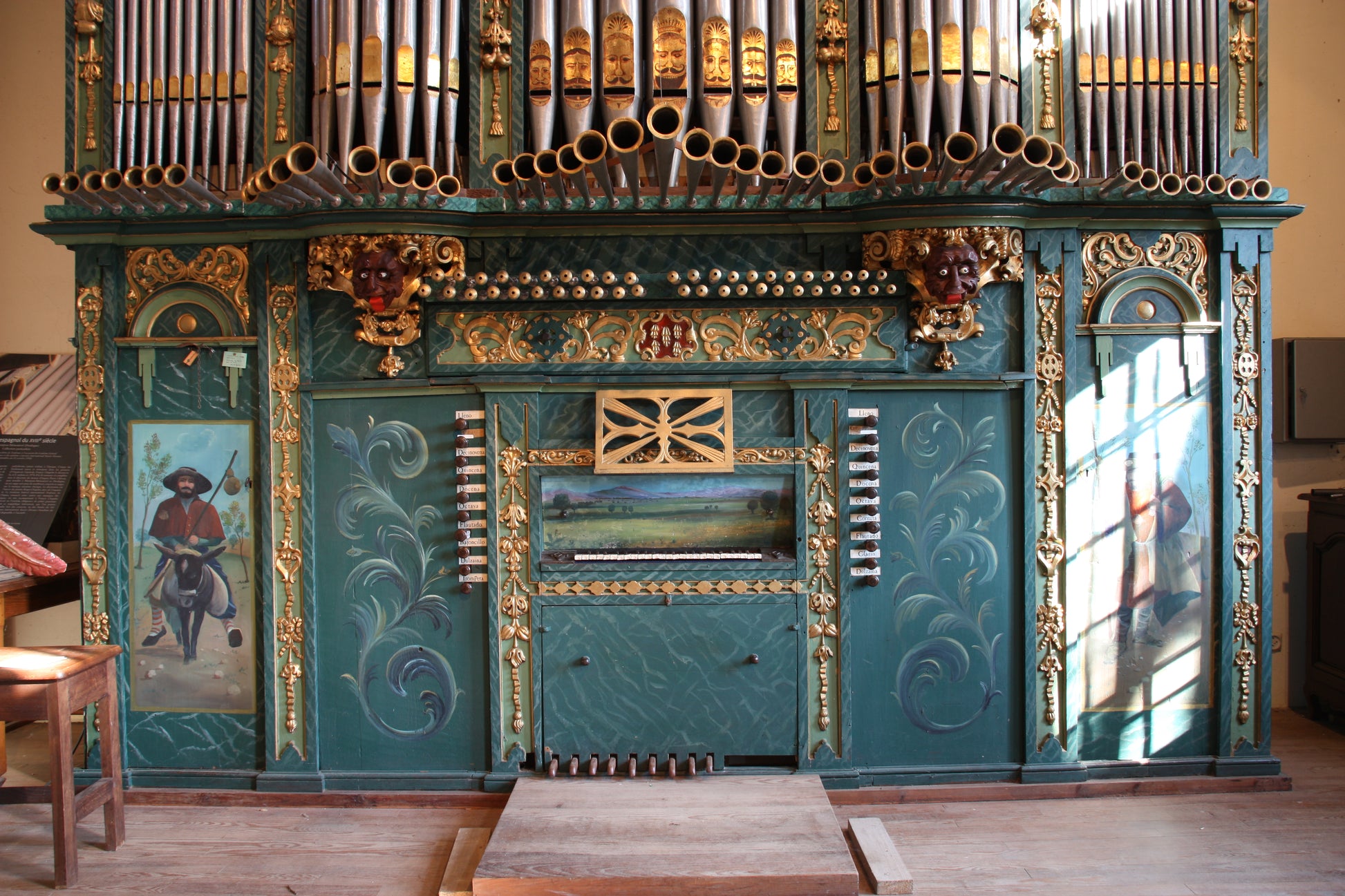



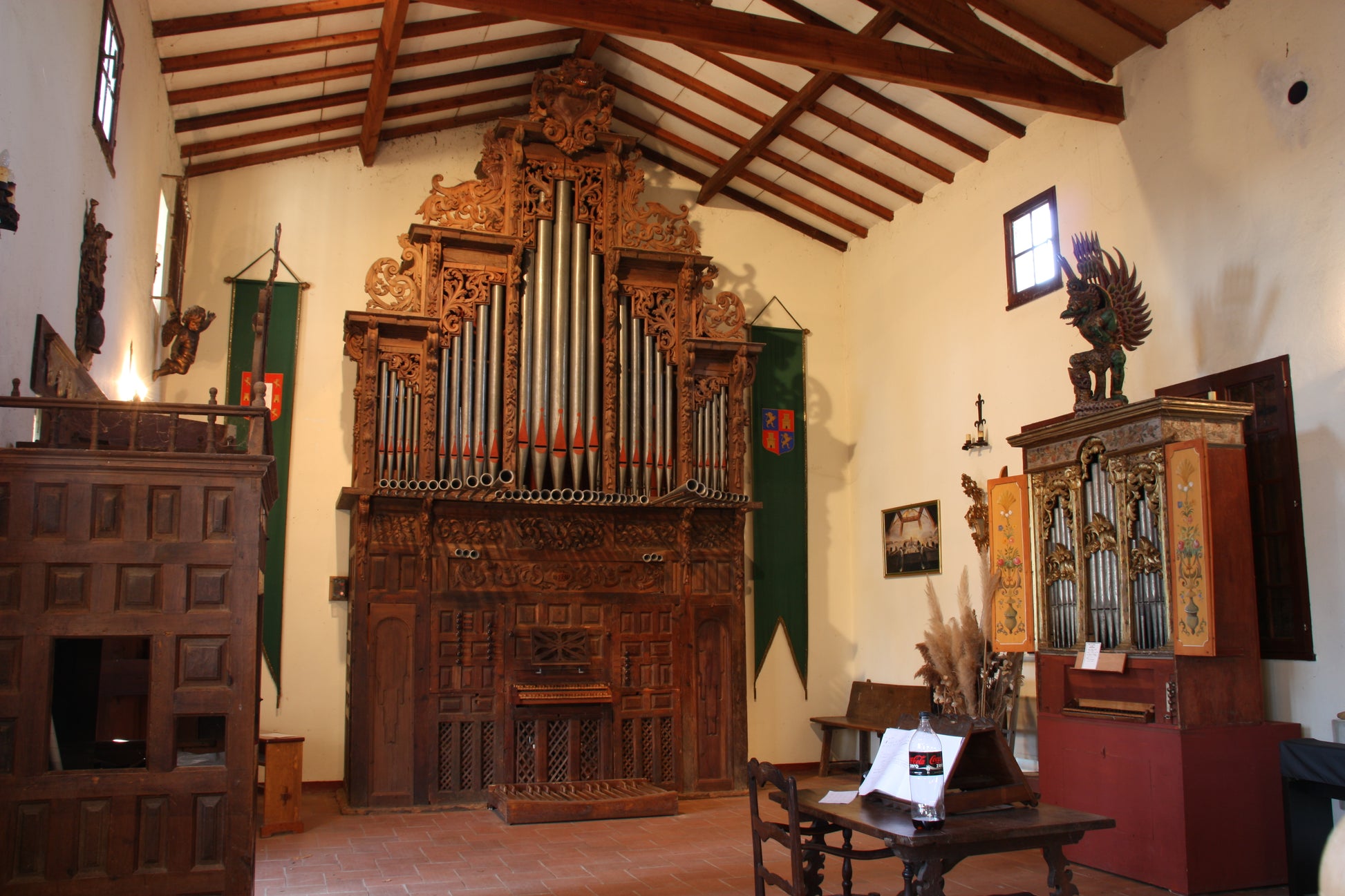

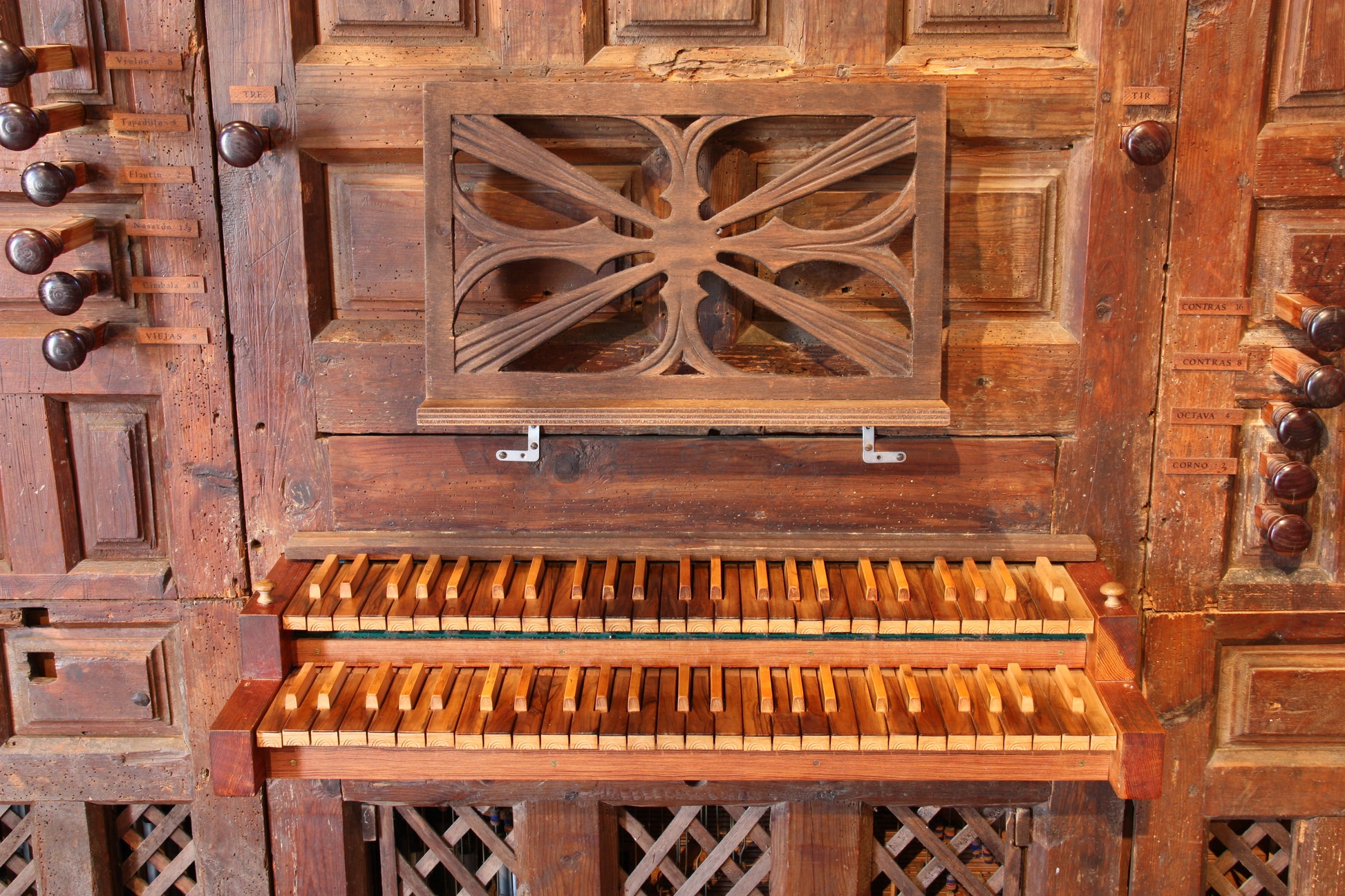
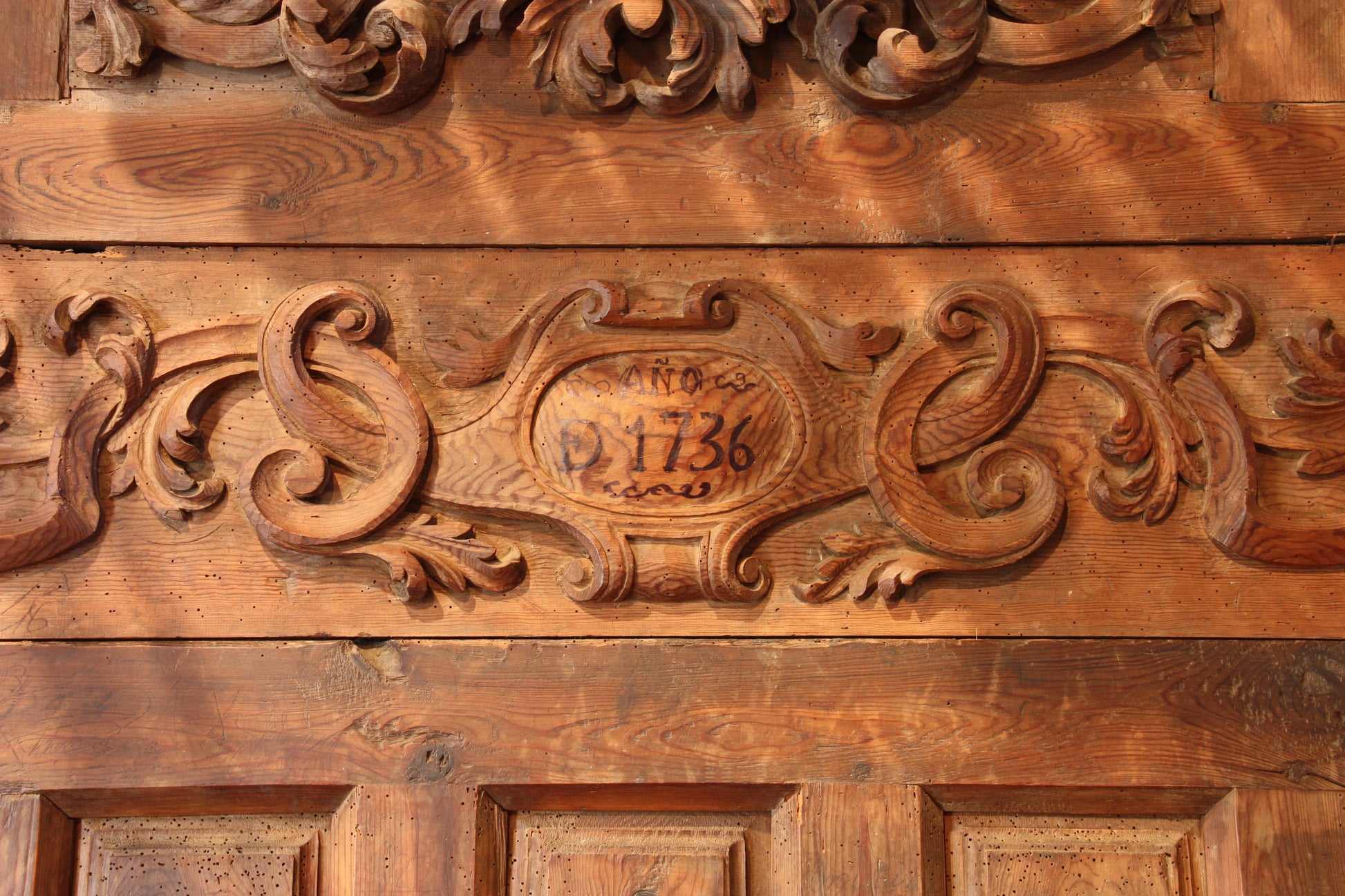
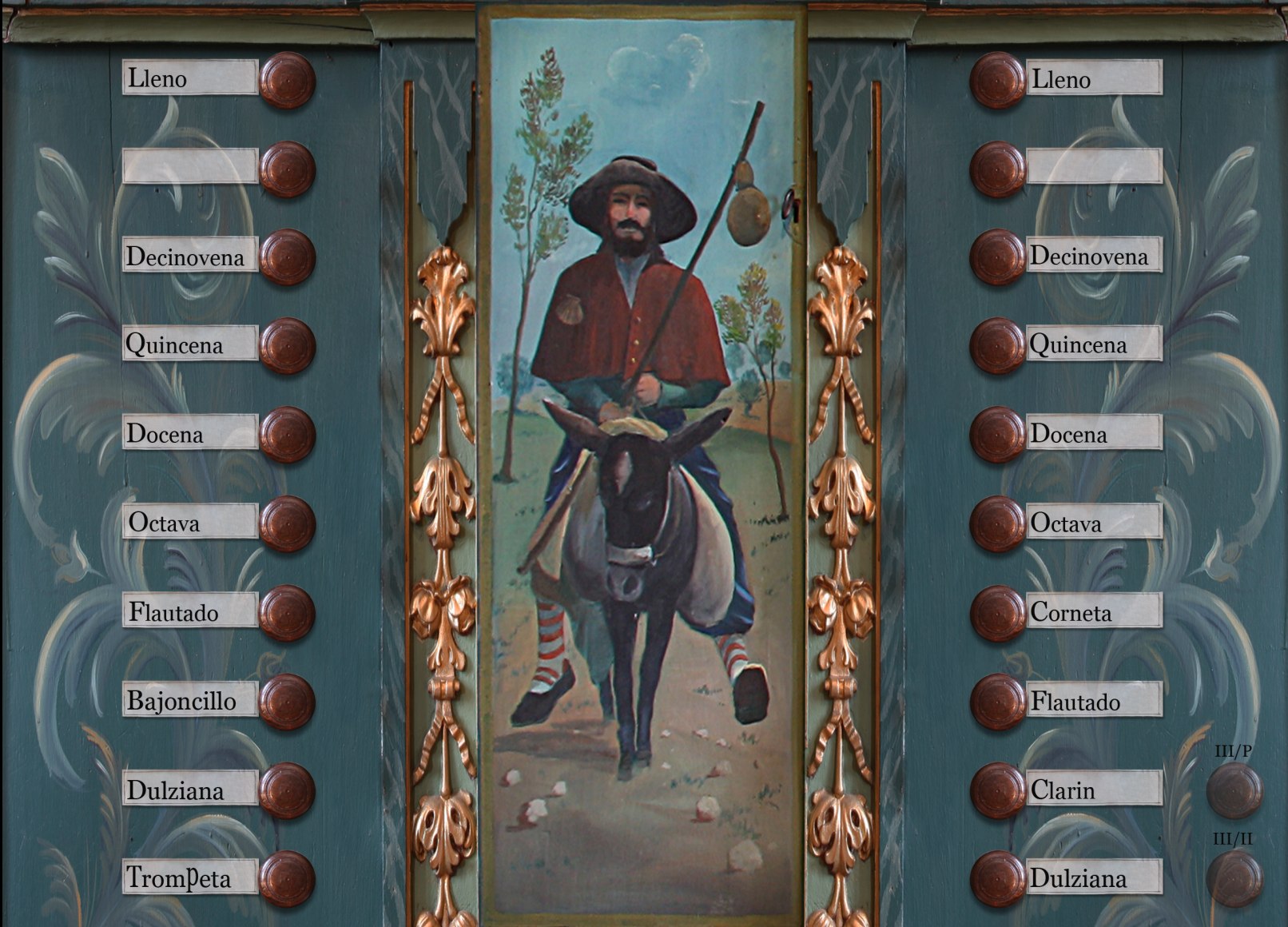
![Schwerin, Dom, Ladegast Organ 1871 [Hauptwerk]](http://artful.shop/cdn/shop/files/ladegast1.jpg?v=1759140126&width=533)
![Segovia, 1772 [Hauptwerk]](http://artful.shop/cdn/shop/files/ss_segovia1.jpg?v=1714213906&width=533)
![Groningen, 1450-1740 [Hauptwerk]](http://artful.shop/cdn/shop/files/ss_Groningen1.jpg?v=1693275425&width=533)
![St. Maximin, 1775 [Hauptwerk]](http://artful.shop/cdn/shop/files/ss_maximin1.jpg?v=1692902597&width=533)
![Reuter, 1928 [Hauptwerk]](http://artful.shop/cdn/shop/files/ss_Reuter1.jpg?v=1693321024&width=533)
![Casavant, 1995 [Hauptwerk]](http://artful.shop/cdn/shop/files/ss_casavant1.jpg?v=1693319885&width=533)
![Rotterdam Hoofdorgel, 1973 [Hauptwerk]](http://artful.shop/cdn/shop/files/ss_RotterdamMain1.jpg?v=1693279529&width=533)
![Piacenza, 1838 [Hauptwerk]](http://artful.shop/cdn/shop/files/ss_piacenza1.jpg?v=1693003521&width=533)
![Bückeburg, 1997 [Hauptwerk]](http://artful.shop/cdn/shop/files/ss_bueckeburg1.jpg?v=1692967628&width=533)
![Lüdingworth, 1683 [Hauptwerk]](http://artful.shop/cdn/shop/files/ss_luedingworth1.jpg?v=1692998051&width=533)